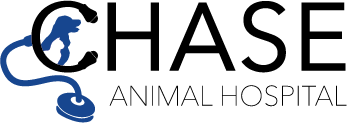Pet Health Articles
-
Ginseng is given by mouth and is used off label and over the counter to treat a variety of conditions including low energy, heart problems, Addison’s disease, cognitive function, and low immune system. Give as directed by your veterinarian. Side effects are uncommon but may include diarrhea, restlessness, or increased blood pressure. Do not use in pets that are allergic to it, are pregnant or are nursing. If a negative reaction occurs, please call your veterinary office.
-
Certain medical conditions require drugs that are available only in an injectable format. In many cases, cat owners can administer these medications at home. Most cats do not mind routine injections that are given in the subcutaneous tissue. This handout provides step-by-step instructions for giving an injection. Dispose of used needles and syringes properly.
-
Certain medical conditions require drugs that are available only in an injectable format. In many cases, dog owners can administer these medications at home. Most dogs do not mind routine injections that are given in the subcutaneous tissue. This handout provides step-by-step instructions for giving an injection. Dispose of used needles and syringes properly.
-
The easiest way to give your cat liquid medication is to mix it in with some canned food. In some cases, this is not possible, and you will have to administer the medication directly into the cat's mouth using a syringe. Before starting, make sure you prepare the syringe with the correct amount of medication. If the medication was refrigerated, you may want to warm it up by holding the syringe tightly in your hand for a minute or two. It may be helpful to have someone assist you the first few times you administer the medication. Try wrapping your cat in a blanket or towel with only its head exposed. Detailed directions for administering the medication are provided in this handout. Make sure you give your cat plenty of praise throughout the procedure and offer a special treat after giving the medication.
-
The easiest way to give your dog liquid medication is to mix it in with some canned food. In some cases, this is not possible, and you will have to administer the medication directly into your dog's mouth using a syringe. Before starting, make sure you prepare the syringe with the correct amount of medication. If the medication was refrigerated, you may want to warm it up by holding the syringe tightly in your hand for a minute or two. It may be helpful to have someone assist you the first few times you administer the medication. Detailed directions for administering the medication are provided in this handout. Be sure to offer your dog lots of praise and offer a treat or extra playtime after giving the medication.
-
Giving pills to cats can be a challenge, even for the most experienced veterinarian! The easiest way to give your cat a pill is to hide the pill in food. Some cats will always find the pill and spit it out, so you may need to administer it directly into your cat's mouth. This handout provides a step-by-step guide to do this, along with some other options if it is still too difficult.
-
Giving pills to dogs can be a challenge, even for the most experienced veterinarian! The easiest way to give your dog a pill is to hide the pill in food. Some dogs will always find the pill and spit it out, so you may need to administer it directly into your dog's mouth. This handout provides a step-by-step guide to doing this at home.
-
This handout describes the benefits of performing examinations at home between regularly scheduled veterinary visits. It outlines the different parts of the body to examine, how to examine and what to look for as abnormals.
-
Glaucoma is a disease of the eye in which the pressure within the eye, called intraocular pressure (IOP), is increased. Glaucoma is caused by inadequate drainage of aqueous fluid. Glaucoma is classified as primary or secondary. High intraocular pressure causes damage to occur in the retina and the optic nerve. Blindness can occur very quickly unless the increased IOP is reduced. Analgesics to control the pain and medications that decrease fluid production and promote drainage are often prescribed to treat glaucoma. The prognosis depends to a degree upon the underlying cause of the glaucoma.
-
Glaucoma is a disease of the eye in which the pressure within the eye, called the intraocular pressure (IOP) is increased. Glaucoma is caused by inadequate drainage of aqueous fluid. It is classified as primary or secondary glaucoma. High intraocular pressure causes damage to occur in the retina and the optic nerve. Blindness can occur very quickly unless the increased IOP is reduced. Analgesics to control the pain and medications that decrease fluid production and promote drainage are often prescribed to treat glaucoma. The prognosis depends to a degree upon the underlying cause of the glaucoma.

